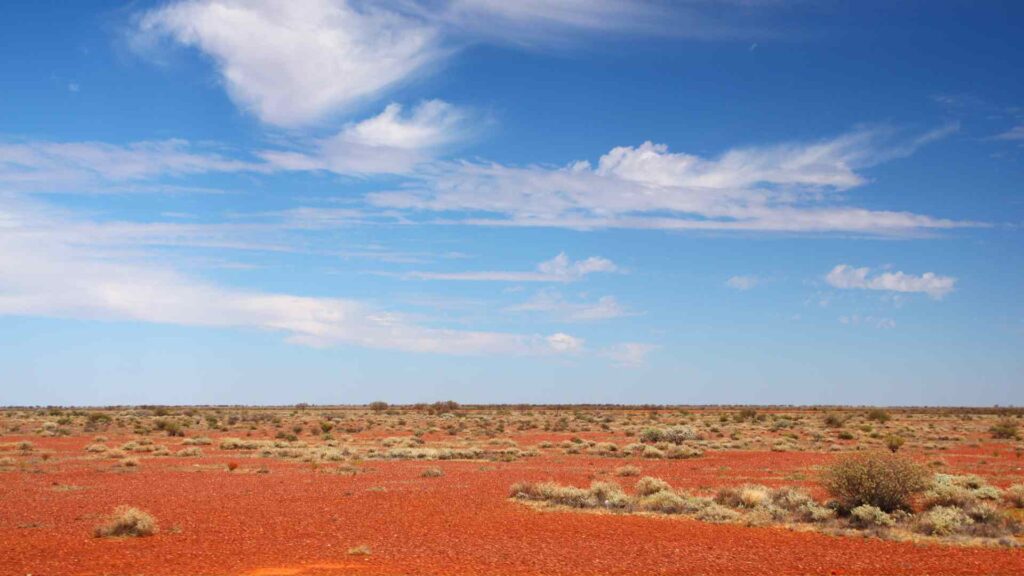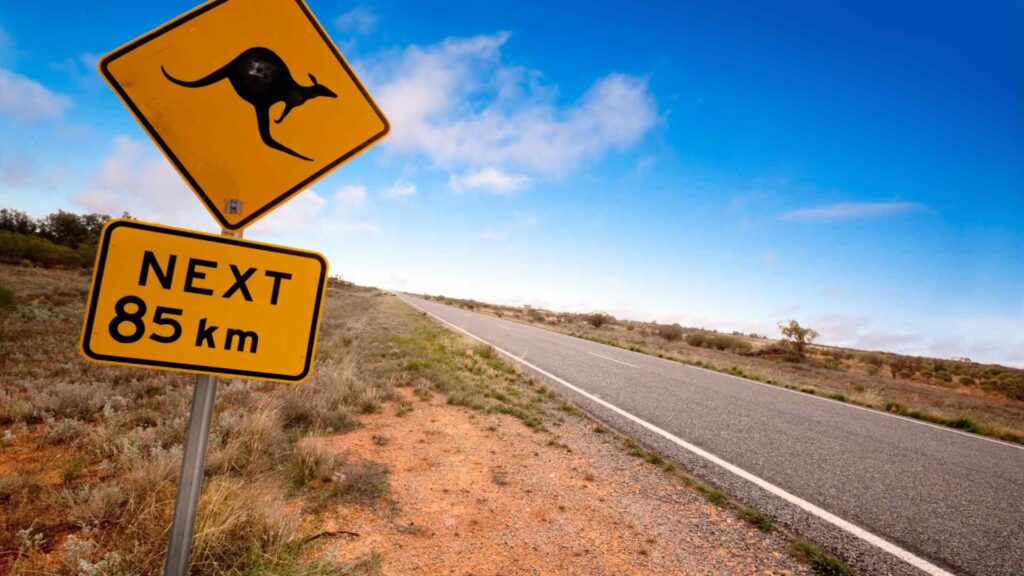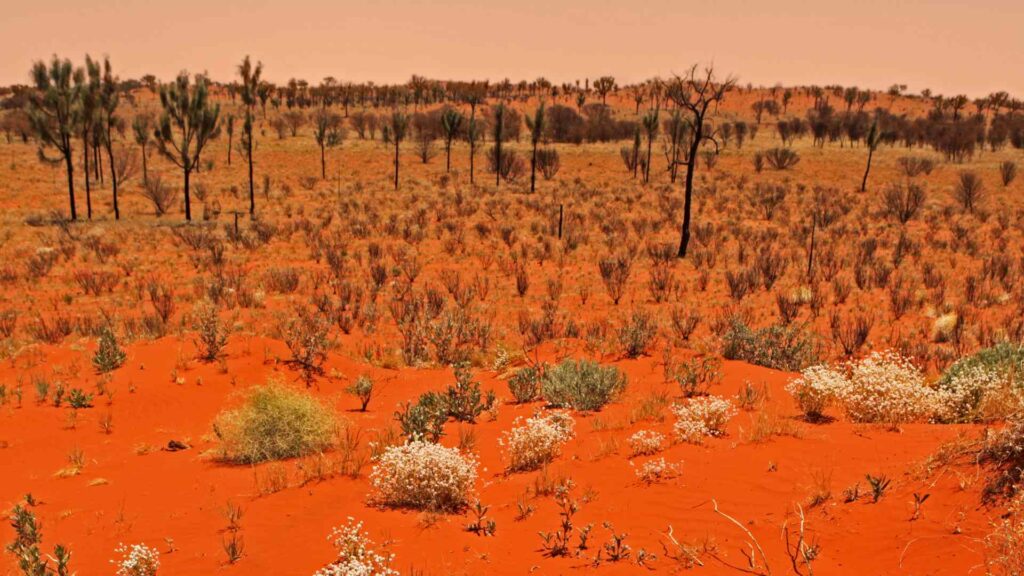The Australian Outback is a land of rugged beauty and timeless stories. Its nicknames, woven from history and local lore, reveal the essence of this iconic wilderness.
From vivid descriptions to heartwarming tales, these monikers reflect the character of the people and places that make the Outback extraordinary.
The Red Centre
The heart of Australia, often referred to as the Red Centre, is home to Uluru and Kata Tjuta. This nickname captures the vibrant, red-hued landscape dominated by iron-rich soils and desert plains.
Background and Meaning
The Red Centre epitomizes the vastness and stark beauty of central Australia. Its fiery red earth, contrasted against blue skies and the green of spinifex grass, is both captivating and symbolic of the continent’s ancient heritage.
This region has long been central to the Aboriginal peoples, particularly the Anangu, for whom the land is deeply sacred. Uluru, known as Ayers Rock in colonial history, stands as a monumental sandstone formation that glows vividly during sunrise and sunset, further affirming the nickname.
Visitors to the Red Centre find not just a geographical feature but a spiritual experience. This nickname underscores the rugged spirit and resilience required to thrive in such an environment, embodying the Outback’s enduring allure.

Never Never
One of the most poetic nicknames, Never Never, conjures the enigmatic and untamed wilderness of the Outback. It signifies both remoteness and allure.
Background and Meaning
The term “Never Never” originates from Australian literature, notably in Jeannie Gunn’s 1908 memoir We of the Never Never. It speaks to a place that feels distant and mysterious, evoking both excitement and trepidation.
Located in the Top End of the Northern Territory, the Never Never is characterized by rugged escarpments, billabongs, and crocodile-rich waters.
To pioneers and early settlers, this region was daunting and unpredictable, yet its allure proved irresistible. The nickname captures a mix of awe and respect for the land’s raw, untamed nature.
Today, it symbolizes resilience and adventure, drawing those who seek to explore Australia’s most remote and iconic landscapes.

Sunburnt Country
Adapted from Dorothea Mackellar’s famous poem My Country, the nickname Sunburnt Country pays homage to Australia’s harsh yet beautiful climate.
Background and Meaning
The term reflects Australia’s enduring identity as a land of extremes. From blistering summers to sweeping bushfires, the Sunburnt Country nickname encapsulates both the challenge and wonder of the Outback.
Mackellar’s words, “I love a sunburnt country, a land of sweeping plains,” resonate with the deep connection Australians feel toward their land. The Outback, with its sprawling deserts, is the epitome of this imagery. While the harsh sun leaves its mark, it also nurtures life, from kangaroos to wildflowers blooming after rain.
This nickname embodies not just the land but the people who inhabit it—hardy, resourceful, and deeply attuned to their environment.
The Bush
A quintessential term in Australian vernacular, The Bush refers to the untamed expanses of the Outback, where nature reigns supreme.
Background and Meaning
The Bush is a beloved nickname for areas beyond the cities and towns, evoking a sense of freedom and self-reliance. Unlike other terms that may imply harshness, The Bush is often used affectionately, reflecting its cultural significance.
In the Bush, vast eucalyptus forests, rolling plains, and unique wildlife create a world apart from urban life. For early settlers, this term symbolized the challenges and rewards of carving a life in Australia’s rugged wilderness. It’s also central to the “bush ethos,” celebrating mateship and a can-do spirit.
Modern Australians still regard The Bush as a retreat from modernity, a place where simplicity and natural beauty take center stage.

The Outback
Perhaps the most iconic nickname, The Outback, encompasses all the vast, sparsely populated areas of Australia beyond the coastal regions.
Background and Meaning
The term “Outback” conjures images of wide-open spaces, endless horizons, and a sense of adventure. It is synonymous with Australia’s identity as a land of extremes, from its sweltering heat to its freezing desert nights.
Though the Outback’s exact boundaries are undefined, it generally includes areas like the Simpson Desert, the Kimberley, and beyond. Its name reflects both geographical remoteness and the resilience of those who call it home.
The Outback holds cultural significance in Australian literature, films, and folklore, serving as a backdrop for stories of survival, exploration, and connection with nature.
The Dead Heart
The nickname The Dead Heart refers to Australia’s central deserts, perceived as lifeless and barren—a misconception that belies their hidden vitality.
Background and Meaning
Historically, explorers like Charles Sturt saw the desert interiors as inhospitable, dubbing them “dead.” However, these areas are teeming with life, from hardy plants to elusive creatures like the bilby and thorny devil.
This nickname is a reminder of the harsh conditions early settlers faced. It also highlights the resilience of Indigenous communities who thrived here long before European arrival. The Dead Heart isn’t dead at all—it’s a vibrant, albeit harsh, ecosystem that has shaped Australia’s history and identity.
Back of Beyond
The phrase Back of Beyond is synonymous with extreme remoteness, conjuring images of desolation and mystery.
Background and Meaning
Coined by poet and writer A. B. “Banjo” Paterson, this nickname underscores the daunting challenge of reaching Australia’s most remote corners. The Back of Beyond symbolizes a world far removed from urban comforts, where survival depends on grit and ingenuity.
Regions like the Simpson and Gibson deserts are often associated with this term. Despite its harshness, the Back of Beyond has an undeniable allure, representing the ultimate frontier for adventurers and dreamers alike.
The Never-Ending Plains
The nickname The Never-Ending Plains speaks to the sprawling landscapes of the Outback, where the horizon seems infinite.
Background and Meaning
This moniker captures the essence of Australia’s interior, where flatlands stretch as far as the eye can see. These plains, often punctuated by dry creek beds and sparse vegetation, are home to unique wildlife like emus and kangaroos.
For Indigenous Australians, these plains are sacred, with songlines mapping ancient stories across the land. To settlers, they were both a challenge and a promise, embodying the freedom and vast potential of the Outback.
The Kimberley Frontier
Known as Australia’s last great wilderness, the Kimberley Frontier is a nickname that celebrates the rugged beauty of this northwestern region.
Background and Meaning
The Kimberley is a land of dramatic contrasts—towering cliffs, lush gorges, and vast savannahs. Its nickname reflects its role as a remote, untamed frontier where ancient Indigenous cultures and modern explorations coexist.
Rich in history and natural wonders, the Kimberley offers a window into a world that feels untouched by time. This nickname highlights its status as a jewel of the Outback, beloved by adventurers and nature lovers alike.
The Big Smoke and Beyond
Contrasting urban life, The Big Smoke and Beyond draws attention to the Outback’s stark difference from city living.
Background and Meaning
While “Big Smoke” refers to Australia’s metropolitan hubs, “Beyond” captures the allure of escaping into the Outback. It symbolizes freedom and adventure, reminding Australians of the vast wilderness waiting outside the urban sprawl.
This nickname emphasizes the cultural divide between the bustling cities and the timeless Outback, where life takes on a slower, more profound rhythm.
FAQs
What is the Australian Outback known for?
The Outback is known for its vast, remote landscapes, unique wildlife, and cultural significance, embodying Australia’s adventurous spirit.
Why is it called the Red Centre?
The Red Centre refers to the iron-rich red soils of central Australia, epitomized by landmarks like Uluru and Kata Tjuta.
What does Never Never mean?
Never Never is a poetic nickname for Australia’s remote regions, symbolizing mystery, resilience, and untamed beauty.
Is the Outback the same as the Bush?
No, while both refer to rural Australia, the Bush generally implies forested or less remote areas, whereas the Outback denotes vast, arid regions.
Why is the Outback important to Australia?
The Outback represents the heart of Australia’s cultural identity, showcasing resilience, history, and the beauty of its untouched wilderness.
What animals are found in the Outback?
The Outback is home to kangaroos, emus, dingoes, and unique reptiles like the thorny devil, as well as numerous bird species.
